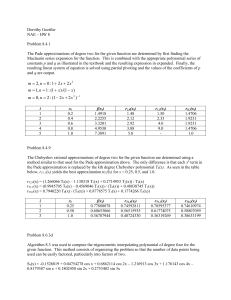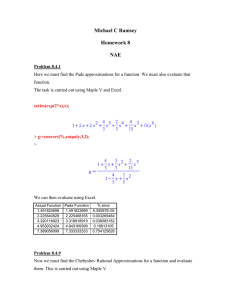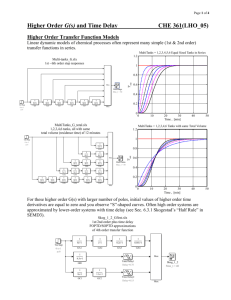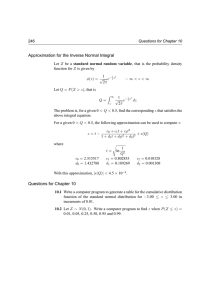Time Delay & Padé Approximations in Cybernetics
advertisement
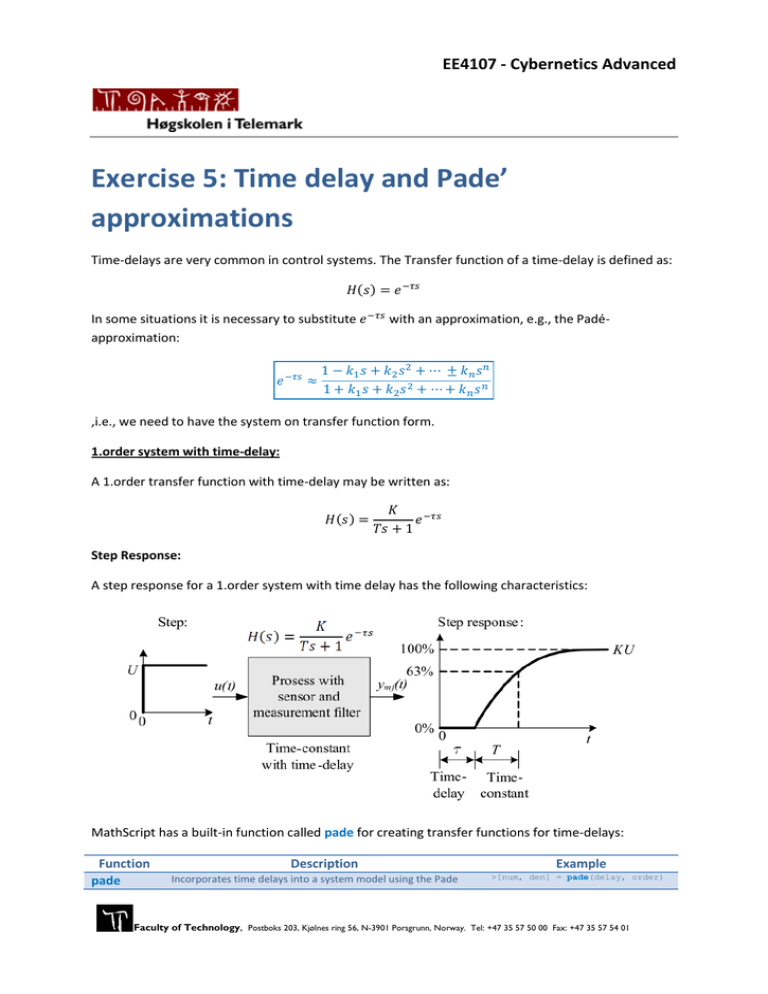
EE4107 - Cybernetics Advanced Exercise 5: Time delay and Pade’ approximations Time-delays are very common in control systems. The Transfer function of a time-delay is defined as: ( ) In some situations it is necessary to substitute approximation: with an approximation, e.g., the Padé- ,i.e., we need to have the system on transfer function form. 1.order system with time-delay: A 1.order transfer function with time-delay may be written as: ( ) Step Response: A step response for a 1.order system with time delay has the following characteristics: MathScript has a built-in function called pade for creating transfer functions for time-delays: Function pade Description Incorporates time delays into a system model using the Pade Example >[num, den] = pade(delay, order) Faculty of Technology, Postboks 203, Kjølnes ring 56, N-3901 Porsgrunn, Norway. Tel: +47 35 57 50 00 Fax: +47 35 57 54 01 2 approximation method, which converts all residuals. You must specify the delay using the set function. You also can use this function to calculate coefficients of numerator and denominator polynomial functions with a specified delay. >[A, B, C, D] = pade(delay, order) >K=4; T=3; delay=5; >H = sys_order1(K, T, delay) >H = set(H1, 'inputdelay', delay); >H = series(H1,H2); Sys_order1 set series Task 1: Time delay using approximation Given the following system: ( ) Task 1.1 Create Pade’ approximations for this system using approximations with different orders. Use approximations with order 1, 2, 3, 4 and 10 using the built-in pade function in MathScript. Plot the step response for these approximations. Discuss the results. Task 1.2 Plot the step response for the exact solution ( ( ) ) using “pen and paper”. You can also find the exact step response in MathScript using e.g., the sys_order1 function. Compare the results. Compare the exact solution with an approximation of order 50. Discuss the results. Task 2: 1.order system with delay Given a 1.order transfer function with time-delay: ( ) Where , i.e.: ( ) Task 2.1 Draw a sketch of the step response for this system using “pen and paper”. EE4107 - Cybernetics Advanced 3 Task 2.2 Find the step response for this system using MathScript using a 5.order approximation and the pade function. Compare the results with the exact solution (using e.g., the sys_order1 function). Task 3: Pade’ Approximation Note! In this task we shall not use the built-in pade function, but create our own approximation using the definition itself: where: Task 3.1 Set up the mathematical expressions, i.e, find the transfer functions for a 1.order and 2.order Pade’approximation (pen & paper). Set the time-delay , i.e. ( ) Task 3.2 Define the transfer function for a 1.order and 2.order pade’-approximation using the tf function in MathScript. Use the step function to plot the responses. Task 3.3 Do you get the same results using the pade function? Discuss the results. Additional Resources http://home.hit.no/~hansha/?lab=mathscript Here you will find tutorials, additional exercises, etc. EE4107 - Cybernetics Advanced
